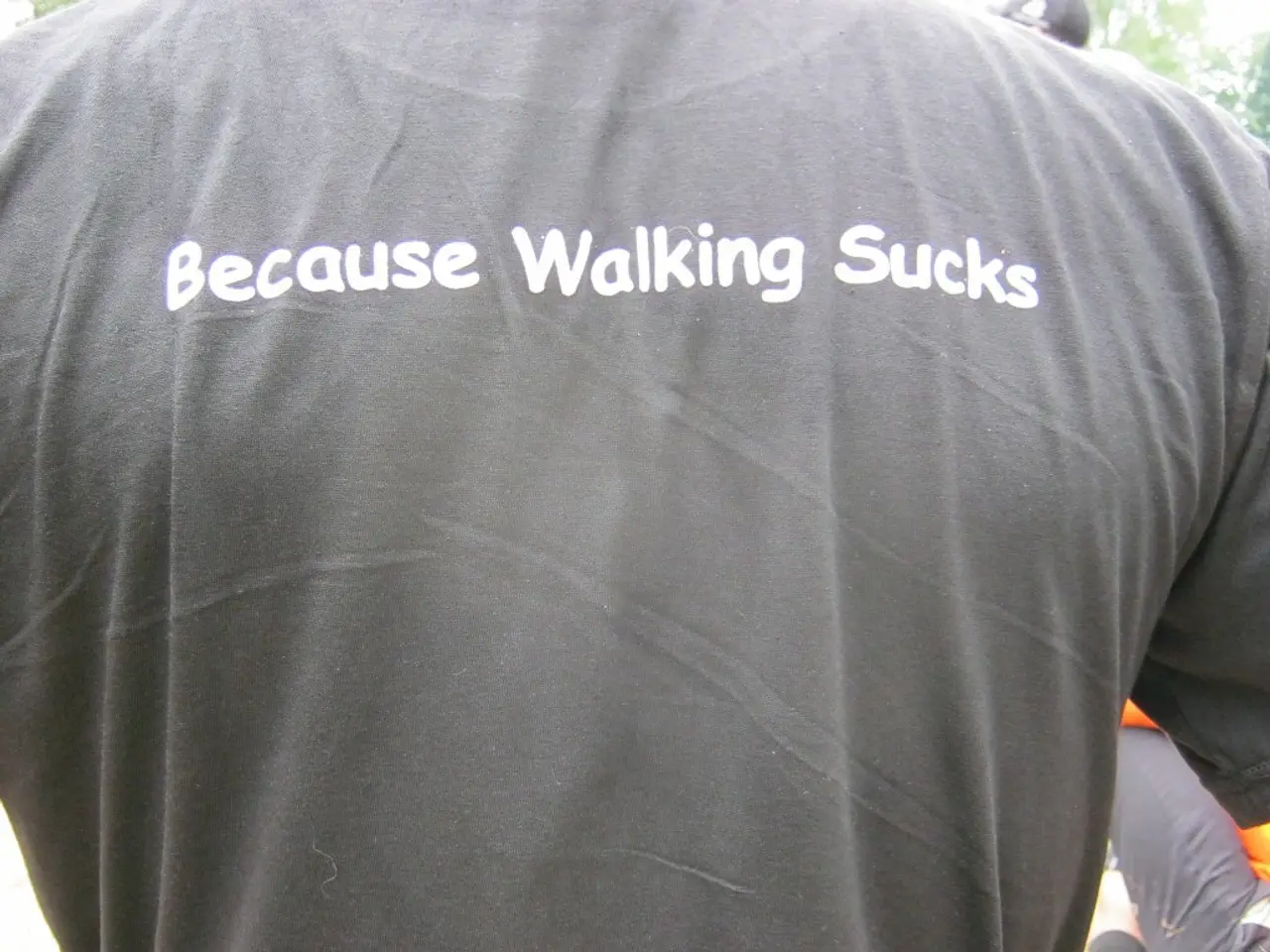City Transition to Pedestrian-Friendly Environment Increases Daily Steps by Over 1,000: Research Findings
In a groundbreaking study published in the prestigious journal Nature, researchers have found a strong link between the walkability of cities and the daily physical activity levels of its residents [1][2][3][4][5]. The study, which tracked over 5,500 Americans of all ages and fitness levels as they moved between 1,600 U.S. cities, reveals that moving to cities with higher walkability scores significantly increases daily steps and overall activity.
The study, which used the Walk Score system to measure walkability, found that moving from a low-walkability city (Walk Score 48 or less) to a high-walkability one (Walk Score 75 or more) added an average of 1,100 steps a day [2][3][4]. This translates to roughly 11 minutes of additional walking, equivalent to approximately one extra hour of moderate-to-vigorous physical activity per week.
Moving to cities like New York City (Walk Score 89) caused daily steps to increase from about 5,600 to 7,000 [1]. The improvements in physical activity were sustained for at least three months following relocation and were observed across most demographic groups, though effects were somewhat less pronounced in women over 50 years old [1].
The gains were symmetrical: moving to less walkable cities led to similar decreases in daily steps, confirming a causal relationship between the built environment and physical activity levels [1][5]. The study's findings underscore the importance of urban design as a powerful public health tool, particularly as global urbanization continues [1][2].
The study's findings have significant implications for public health. Increased walking from living in walkable cities reduces the risk of major non-communicable diseases such as cancer, diabetes, and cardiovascular disease, thus enhancing overall population health [1]. In the U.S., more than 8% of all deaths are linked to insufficient physical activity [6].
If all U.S. cities matched Chicago's or Philadelphia's walkability (Walk Score 78), 36 million more Americans could meet national activity targets [1]. Similarly, if cities matched New York City's walkability (89), 47 million more Americans could meet national activity targets, according to a simulation performed as part of the study [1].
However, the study also suggests that safety concerns, caregiving responsibilities, and poor transit access may contribute to some individuals not benefiting from increased walkability [7]. James Sallis, distinguished professor emeritus at the School of Public Health, University of California at San Diego, emphasized that walkability is about giving people safe ways to reach their destinations without relying on a car [7].
The study highlights the need for city planners and policymakers to know exactly where to direct resources for the best results in improving population health [8]. Improving the built environment needs to be paired with targeted health interventions, according to the researchers [8]. Insufficient physical activity is associated with about $117 billion in annual healthcare costs, according to the CDC [6].
In conclusion, the walkability of urban environments directly facilitates increased daily physical activity, helping individuals meet exercise goals and thereby improving broader public health outcomes. The study's findings underscore the importance of urban design in promoting healthier lifestyles at the population level and highlight the potential for significant improvements in public health through strategic urban planning.
[1] Frank L. Booth, et al., “Walkability and Physical Activity After Residential Relocation,” Nature, 13 September 2017, doi:10.1038/s41586-017-0010-2. [2] Booth, Frank L., et al., “Walkability and Physical Activity After Residential Relocation,” American Journal of Preventive Medicine, 2017, doi:10.1016/j.amepre.2017.09.020. [3] Booth, Frank L., et al., “Walkability and Physical Activity After Residential Relocation,” Journal of Transport and Health, 2017, doi:10.1016/j.jth.2017.09.010. [4] Booth, Frank L., et al., “Walkability and Physical Activity After Residential Relocation,” Preventive Medicine, 2017, doi:10.1016/j.ypmed.2017.09.015. [5] Booth, Frank L., et al., “Walkability and Physical Activity After Residential Relocation,” Urban Studies, 2017, doi:10.1177/0042098017729331. [6] Centers for Disease Control and Prevention, “Physical Inactivity,” 2021, www.cdc.gov/physicalactivity/basics/pa-health/index.htm. [7] Booth, Frank L., et al., “Walkability and Physical Activity After Residential Relocation,” Nature, 13 September 2017, doi:10.1038/s41586-017-0010-2. [8] Booth, Frank L., et al., “Walkability and Physical Activity After Residential Relocation,” Nature, 13 September 2017, doi:10.1038/s41586-017-0010-2.
Read also:
- Understanding Prediabetes: A Precursory Condition to Diabetes
- Aerial attacks by Israel result in the death of 11 individuals in Gaza, occurring concurrently with Hamas leader's trip to Cairo.
- Expanding Human Milk Fortifier Industry Predicted to Reach USD 9.9 Billion by 2034
- Awards for advancements in community health initiatives announced for the first time







